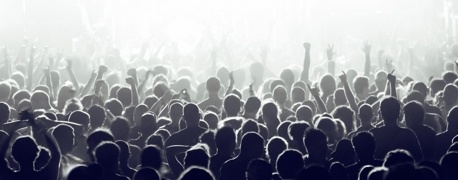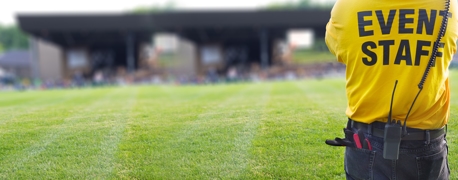General Admission & Festival Seating: When Unassigned Seating Leads to Chaos

No one buys a concert ticket with the thought or intention that they will be putting their lives in danger if they attend. They assume – and rightfully so – that they’ll have a seat or at least a spot in the crowd where they can watch the show in relative safety. They assume that the organizers will have the event planned properly to make sure getting in and out of the venue can be accomplished without too much trouble. They assume that, if anything starts to go wrong, security and medical personnel will be standing by to help.
These are reasonable expectations, whether you have a reserved seat or a general admission ticket. Unfortunately, for fans in standing-room-only and first-come, first-served areas, also known as festival seating, poor planning, and inadequate security can quickly turn a peaceful concert into chaos. That’s what happened at the Astroworld Festival in Houston, Texas in November 2021. 10 people died and hundreds needed medical attention after overcrowding led to a crowd surge that left people unable to move or even breathe.
The Astroworld crowd crush wasn’t the first disaster of its kind. Festival seating has been under scrutiny for decades for posing an undue danger to fans.
About Festival Seating
Merriam-Webster defines festival seating as “a seating arrangement (as in an auditorium) in which unreserved seats are available to the first people to claim them.” However, most people use the term to refer to any type of general admission area at a concert or sporting event, including sections without any seats at all. These “standing-room-only” arrangements are the ones that have proven most dangerous through the years.
Some venues are set up with reserved seating and general admission or festival seating areas. In stadium settings, for example, parts of the field may be sectioned off for standing-room-only general admission areas – particularly those closest to the stage.
Why General Admission & Festival Seating Areas Are Dangerous
When a lot of people are crowded together, crowd surges and crowd crush are more likely. Surges happen when a wave essentially rolls through the crowd. They can knock people over where they’re trampled, or they can put so much pressure on fans that they can’t breathe or move. Crowd crush can be combined with a surge or it may happen gradually as pressure increases in a densely packed area of concertgoers.
The dangers of festival seating have been known for years. In a 1991 New York Times opinion piece: Peril of Rock Concerts’ Festival Seating, the author starts by referencing an article he wrote over 10 years prior after a deadly crowd surge at a Cincinnati, Ohio concert by The Who in 1979 that claimed 11 lives. He was reminded of it and the dangers of venues with festival seating when he saw an article in The Times about three young fans who had been crushed to death at an AC/DC concert in Salt Lake City, Utah:
“Both concerts used the highly volatile festival seating arrangement -- a misnomer, since fans in fact do not have seats, but rather a corralled area in front of the stage into which they crowd. Festival seating has a history of causing injury and death.”
Festival Seating Banned in Cincinnati for 24 Years
After The Who concert tragedy in Cincinnati, the city banned festival-style seating. It ended up lifting the ban about 24 years later, in 2004. In a unanimous decision, city council members decided to lift the ban because, out of the top 50 cities for concert venues in the U.S., it was the only one with a general admission seating ban. In lifting the ban, city officials said they would impose strict limits on the number of general admission tickets that could be sold. They also said that general admission areas would need to be opened at least two hours prior to the show and that the venue must have sufficient ushers and security personnel to manage the area.
Since 1982, festival-style seating has been regulated in Los Angeles, California by order of the Fire Prevention Bureau. Other Southern California fire departments have followed suit, but some exceptions have been made, such as a 1989 Grateful Dead concert at the Forum in Inglewood.
According to the North American Concert Association, it’s estimated that 15% of rock shows in the U.S. that take place in auditoriums holding 10,000+ people use festival-style seating in some capacity.
Should General Admission Shows Be Banned?
The Astroworld tragedy is the latest in a long history of injuries and deaths at large venues using general admission areas. It has again raised the question: should festival seating be banned entirely?
General admission areas let fans get close to the stage, where the energy is the highest and they can see their favorite performers up close and personal. Venues and organizers can sell more tickets. Performers feed off the energy of the crowd. Some performers and bands actually insist on festival seating areas close to the stage. Many concerts with general admission areas are properly managed and no one is seriously injured.
Festival seating areas can be managed by:
- Limiting ticket sales to those areas to prevent overcrowding
- Using strategically placed entrances, exits, and walkways in general admission areas to allow fans and event personnel to get in and out
- Increasing security personnel in general admission areas
- Using crowd spotters to identify any trouble areas so they can be handled quickly
These are all great strategies – in theory. Until event organizers, performers, security, and venues can work together to put safety first, however, general admission shows will be dangerous for fans.
You Have Rights. Talk to a Concert Injury Attorney Today.
Concert injuries should not happen in the first place. Festival seating should not cause life-changing injuries or claim innocent lives. Until things change, however, Arnold & Itkin is here to help fans and their families seek justice. Our concert injury attorneys are currently representing over 200 people who were at the Astroworld Festival in Houston. We are looking into what role Travis Scott, Live Nation, and other parties played in failing to protect fans in the general admission area of the venue, plus the event as a whole.
If you were harmed at a concert, festival, or sporting event in the general admission or festival seating area, we want to hear your story. We want to help. Call (888) 493-1629 to find out more about your rights and options.


